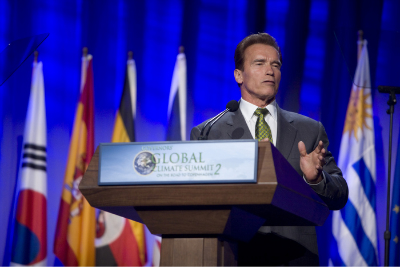LOS ANGELES — EPA administrator Lisa Jackson unveiled a modest proposal on Wednesday: If a company wants to build a new power plant or refinery, or fix up a smoky old belcher, it will have to use the best available technology to control greenhouse gases.
That’s it. Oh, and the Dunkin Donuts of the country will be spared.
Depending on who you ask, the proposed regulation is either a bone-headed move that will land her agency back in court, or a shrewd maneuver to quash industry scare tactics and quell rising panic on Main Street about the potential costs of far-reaching climate legislation.
It’s not clear how much the rule would accomplish. At a Wednesday press conference during her stop here at the Governors’ Global Climate Summit, Jackson admitted she had no idea how many tons of carbon dioxide, methane and other greenhouse gases would actually be reduced if the regulation goes into effect. Ditto on how much the regulation could end up costing affected businesses.
But one thing was absolutely clear, she said: The regulation would not affect your local doughnut shop.
“Very soon, we will hear about doomsday scenarios, with EPA regulating everything from cows to the local Dunkin Donuts. But let’s be clear. That’s not going to happen,” said Jackson in her speech at the gathering organized by Gov. Arnold Schwarzenegger (R). “We know the corner coffee shop is no place to look for meaningful carbon reductions.”
The regulation would only apply to facilities that emit 25,000 tons or more a year, she said. That’s about 10,000 major businesses all told, of the millions dotting the American strip mall and manufacturing landscape.
Industry groups were quick to point out that the Clean Air Act says that any pollution source over 250 tons must be regulated, not 25,000 tons.
Former Bush-era EPA official Jeff Holmstead, now with the D.C. law firm Bracewell & Giuliani, said the EPA action could face a legal challenge. “Normally, it takes an act of Congress to change the words of a statute enacted by Congress, and many of us are very curious to see EPA’s legal justification for today’s proposal,” he said. “Let’s hope it stands up in court, or anyone who wants to build anything in the U.S. will be facing more litigation and delay.”
Jackson said the agency’s lawyers had studied the issue, and were confident they could proceed.
David Doniger, director of the Natural Resource Defense Council’s climate change policy center, said he’ll be curious to see who actually files a lawsuit saying small businesses should have to face the same regulations as the nation’s biggest polluters.
He said courts had ruled that if regulators had limited resources, they could focus just on big polluters. He said Congress could also easily insert a clause in its climate legislation, saying it only applied to major polluters.
“It’s a simple fix,” he said, ignoring the still formidable task of getting a climate bill through Congress.
Doniger said once new vehicle fuel standards are put in place next March, as already announced by the Obama administration, that would automatically trigger a requirement that other polluters use the best available equipment as well. Jackson’s proposal to increase the threshold for regulation to 25,000 tons would ensure only the biggest would be affected.
“It’s a very smart move,” said Doniger. “It’s supposed to quiet the nerves of the mom and pop shops.”
The Obama administration is facing “a very delicate balance” between taking steps to curb emissions, and “not scaring the hell out of people,” said California Air Resources Board Chair Mary Nichols. “They’re trying to not create panic in the streets … although people may still end up going into freak out mode.”
Nichols pointed out that under California’s Global Warming Solutions Act, also known as AB 32, local air districts were already requiring major utilities and other large emitters to use the best equipment available to reduce emissions.
All sides agree that the EPA’s announcement is one more sign that the Obama administration is moving forward with steps to regulate greenhouse gases, while hoping that Congress will pass legislation that achieves the same goal.
“Today’s proposal is a valiant effort by EPA to fit a square peg into a round hole,” said Holmstead. “The Clean Air Act was not designed or intended to regulate carbon dioxide, but the Obama administration has already announced that it plans to start using the Act to regulate carbon dioxide early next year unless Congress passes climate change legislation before then.”
Jackson, in her speech, noted that the U.S. Supreme Court had made it “crystal clear” that her agency must regulate carbon dioxide if the agency concludes it endangers public health. She said that finding would come very soon.
Two weeks ago, she and Transportation Secretary Ray LaHood announced the proposed fuel efficiency standards of 35.5 miles per gallon, calling them “the first ever national action to significantly control vehicle’s greenhouse gases.”
She also signaled that trains, ships and other transportation sources could face emissions cuts in coming monthst, and said her agency is exploring further mandates for power plants, refineries, cement plants and other major emitters.
“We are not going to continue business as usual while we wait for Congress to act,” Jackson said.
—
See also: David Roberts looks at what the EPA regulation does (and does not) contain.



